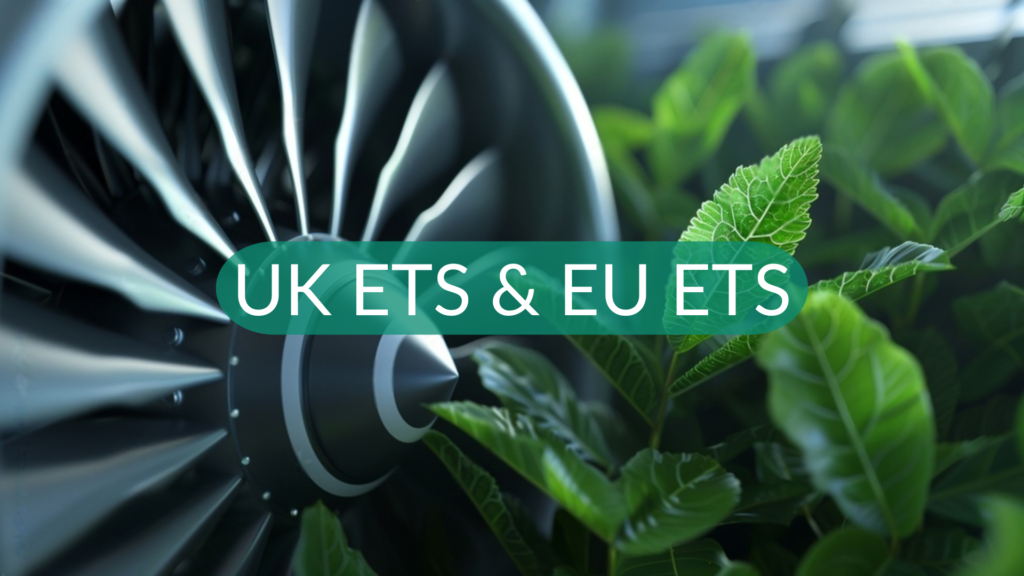
The United Kingdom and the European Union share a common ambition: achieving carbon neutrality by 2050. However, despite their aligned climate goals, the UK and EU Emissions Trading Systems (ETS) have operated independently since Brexit. This divergence has led to market instability, weaker carbon prices in the UK, and growing concerns about the long-term effectiveness of the UK ETS in driving emissions reductions.
As discussions intensify around the possibility of linking the UK ETS with the EU ETS, stakeholders across industries are assessing whether such integration could enhance market stability, improve carbon price signals, and ultimately accelerate decarbonisation. While potential economic and environmental benefits exist, the path to linking both ETS frameworks is fraught with political and regulatory complexities.
The Case for Linking UK and EU ETS
Market Stability and Carbon Pricing
One of the main arguments in favour of linking both ETS frameworks is the potential for greater market stability. The UK ETS is significantly smaller than the EU ETS, making it more volatile and susceptible to price fluctuations. In 2023, UK carbon prices were notably weaker than those in the EU, resulting in reduced revenue generation for reinvestment in sustainability initiatives.
An integrated market would likely reduce this volatility. With a larger market pool, carbon pricing mechanisms could generate stronger and more reliable price signals. Such stability would provide businesses with greater confidence to invest in long-term decarbonisation strategies, fostering a more predictable economic landscape for emissions trading.
Economic and Trade Advantages
For UK industries, especially carbon-intensive sectors such as cement, steel, and chemicals, linking the ETS could help avoid costly tariffs under the EU’s Carbon Border Adjustment Mechanism (CBAM). The CBAM, set to be fully implemented by 2026, imposes levies on carbon-intensive imports from countries with weaker climate policies. Without ETS alignment, UK exporters could face additional costs, making them less competitive in the EU market.
Conversely, aligning with the EU ETS would allow UK businesses to maintain smoother trade relations and benefit from continued access to a broader carbon market. This would also ensure that revenues from carbon pricing could be reinvested into clean energy and technology innovations, similar to the EU’s Innovation Fund.
Accelerating Renewable Energy Investments
A linked ETS could further boost investment in renewable energy, particularly in offshore wind projects across the North Sea. A harmonised carbon price would provide clearer financial incentives for companies to transition away from fossil fuels, supporting the expansion of clean energy infrastructure. With increased revenues from a stronger carbon price, both UK and EU governments could further fund green initiatives, ensuring sustained progress toward net-zero targets.
Challenges in Linking the UK and EU ETS
Disparities in Carbon Pricing
A major hurdle to linking the two ETS frameworks is the significant difference in carbon prices. As of recent reports, the UK’s carbon price stood at approximately $39.9 (£32) per ton, while the EU’s was nearly double at $82.3 (£66) per ton. This price gap creates concerns that integration could lead to downward pressure on EU carbon prices, potentially undermining the effectiveness of its emissions reduction strategy.
To address this, policymakers would need to negotiate a fair mechanism to bridge the pricing gap. This could involve transitional measures, such as price floors or tiered integration phases, ensuring that neither market is unfairly disadvantaged.
Political and Sovereignty Considerations
For some UK policymakers, linking the ETS with the EU is seen as a potential risk to regulatory sovereignty. However, industry experts argue that maintaining independence does not necessarily require isolation. Policy and legal tools could be designed to ensure that the UK retains decision-making authority over its own domestic regulations while still benefiting from a unified carbon market.
As SSE’s Elisa Fenzi noted, ETS linking does not mean relinquishing sovereignty. Instead, it represents an opportunity to create a mutually beneficial framework that supports both environmental goals and economic resilience.
Potential EU Hesitation
From the EU’s perspective, there may be reluctance to link its ETS with a system that currently has weaker pricing mechanisms. Lower UK carbon prices could reduce the overall effectiveness of the EU ETS and complicate the enforcement of the CBAM.
To mitigate these concerns, negotiations would need to establish safeguards ensuring that UK carbon pricing mechanisms align more closely with EU standards before full integration occurs.
What Lies Ahead?
With the implementation of CBAM drawing closer, the window for negotiating an ETS link is narrowing. Delays in decision-making could result in lost investment opportunities and increased trade friction.
For businesses operating in carbon-intensive sectors, regulatory certainty is essential. A well-structured UK-EU ETS link could provide the predictability needed for long-term planning and emissions reduction investments. However, careful negotiations will be required to balance economic interests, political considerations, and the overarching goal of accelerating decarbonisation.
Conclusion
Linking the UK and EU ETS presents both opportunities and challenges. While integration could stabilise carbon markets, enhance investment in clean energy, and improve trade relations, disparities in pricing and political complexities remain significant barriers.
With decarbonisation at the forefront of global climate policy, aligning emissions trading frameworks could serve as a powerful tool for driving meaningful reductions in transport and industrial emissions. As discussions continue, industry stakeholders will be closely monitoring how policymakers navigate these challenges to ensure that carbon markets remain effective in achieving long-term sustainability goals.
As an active participant in transport chain emissions consulting, VURDHAAN remains committed to supporting businesses in navigating evolving carbon market regulations. Through expert guidance and innovative solutions, we help organisations align with regulatory frameworks such as ETS, CBAM, and sustainable fuel incentives, ensuring a smooth transition toward a net-zero future.
